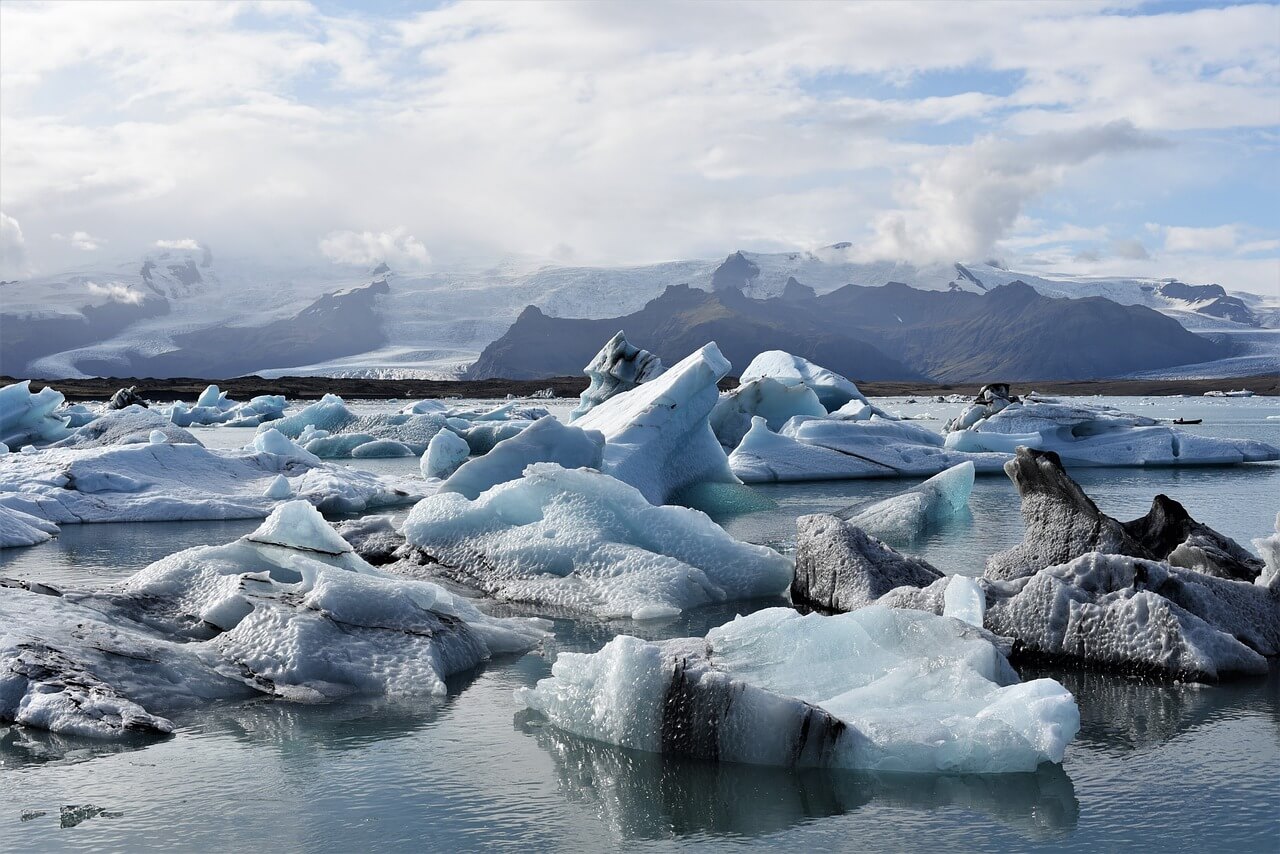Introduction – Polar Vortex 2023
Polar vortex is a term that has often not inaccurately gained media attention in recent years. It’s a seasonal high-altitude atmospheric structure that forms in autumn consolidates in Winter and dissolves in Spring. Its developments and shifts from the vertical axis of polar latitudes are often responsible for sudden changes in tropospheric circulation variations that especially in recent years have led to the abrupt spread of polar air towards mid-latitudes the polar vortex as we will see is a structure present in other planets as well. In the past, it has played a fundamental role in shaping Earth’s climatic history, particularly in the last 2.5 million years characterized by a sequence of recurring glacial periods and shorter interglacial periods. Today thanks to the whims of the polar vortex we have the fortune or Misfortune of occasionally experiencing what the average climate conditions were like during the last glacial minimum we can temporarily return to the conditions that prevailed on Earth twenty thousand years ago. But there’s a danger lurking the possibility that over time some suggest within a couple of decades at most the polar vortex might collapse definitively leading us not to just occasional adventurous cold weeks, but to a permanent Ice Age probable or only possible let’s try to make sense of it all.

Experience the Polar Vortex
You’ve surely experienced it this question is mainly directed at those living in intermediate latitudes like the northern United States or northern Europe. You go to bed on a mild Autumn night only to wake up semi-frozen in the morning the unpleasant surprise comes when you look outside and find your car buried under half a meter of snow and encased in ice. At that point, you probably rushed to the TV in search of news just in time to hear your favorite meteorologist amusingly explain that the cause of your little surprise was the sudden breakdown of something called the polar vortex. Indeed most people must have heard about the polar vortex for the first time in January of 2014, when temperatures plummeted to threatening levels in some places even 50 degrees Celsius below zero. Do you remember the weather conditions were so terrible that even in the harsh state of Minnesota the governor closed schools to protect children from the cold, Perhaps we don’t need to go that far back in time even in December of 2022 the United States experienced an exceptionally cold period with snow storms and temperatures that led to the deaths of at least 63 people. The same happened in February of 2021 when taxes recorded some of the lowest temperatures in the past 30 years resulting in the deaths of at least 250 people due to the consequences. In fact for several years now seemingly contrary to predictions made by global warming Advocates the United States has been witnessing sudden drops in temperatures during the winter season Indeed as that meteorologist mentioned earlier these phenomena are linked to the Arctic Vortex the extensive low-pressure area that hovers over the North Pole and while it might have been a novelty for most of us at the time the polar vortex was anything but new for scientists who had been studying it for at least 30 years.
What is the Polar Vortex?
what is the polar vortex in meteorology The polar vortex also known as the Arctic Vortex is an expansive low-pressure region that remains semi-permanent at higher altitudes above the North Pole. It’s present almost continuously, particularly during the cold season and it’s much more extensive than any other low-pressure area. If we consider that low-pressure areas affecting Central Europe can have a diameter of one thousand to two thousand kilometers or even more not exactly small in this case we’re talking about a Vortex that covers the entire Arctic circle with a center roughly over the North Pole. It can even extend to mid-latitudes boasting a diameter significantly larger than 5000 kilometers. The Vortex is a structure that primarily develops in the stratosphere typically between 12 and 50 kilometers in altitude above the troposphere and tropopause, where major atmospheric processes occur However this vortex at higher altitudes often affects the lower layers of the troposphere as well especially when it’s intense leading to the creation of a tropospheric polar vortex. In meteorology, there’s a distinction between the stratospheric vortex and the tropospheric one which more significantly impacts air masses closer to the ground, unlike the tropospheric vortex which is more or less present throughout the year. The stratospheric one typically forms in September reaches its peak intensity in January and February and dissipates in April until early May we can’t think of the circulation as a massive spinning top filled with Frigidaire stationed over the North Pole. It exhibits a two-story structure much like a house with a ground floor and a first floor In this case the ground floor is the troposphere representing the space that extends firm sea level to an altitude of around 10 kilometers, where the meteorological phenomena we often analyze occurs. The first floor much higher is occupied by the stratosphere extending up to an altitude of approximately 50 kilometers separated from the troposphere by a ceiling known as the tropopause.
Observing it from space
If we could observe all of this from a point in space situated above the North Pole, we’d see an approximately circular cyclonic region with air masses moving counterclockwise. Its Edge is fringed by more or less pronounced undulations, these undulations in meteorology are also known as raspy waves. A solar Vortex is also present above the South Pole and is referred to as the Antarctic Vortex but we’ll revisit that later. But what prevents this Vortex from moving or expanding indefinitely?

What are Jet Streams ?
Generally, The Arctic Vortex is confined above the pole by the so-called warmer jet stream a swift airflow that acts as a barrier to the Arctic Vortex like the rim of a bull. The cold air at the center is denser and effectively trapped within this bowl of warm air, it doesn’t exactly exceed the rim or at least it usually doesn’t when temperatures in the Arctic rise parts of the cold wind Vortex can reach the edge of the bowl surpassing the usual confines of the jet stream and reaching Continental regions as has been known for decades the terrestrial polar vortex is a common feature on almost all planets with a thick atmosphere. Similar Cyclones have been spotted around the poles of Venus and even Mars where the atmospheric density might seem insufficient to generate such phenomena However despite a shared origin that of a gaseous fluid surrounding a rotating Celestial body the forms and sizes of these Cyclones markedly differ from Earth’s a notable example is the incredible hexagonal Vortex encircling Saturn’s North Pole this unique Cloud Distortion of the planet was first observed by the interplanetary Voyager 1 probe in 1981 and later by the Cassini probe in 2006. With improving image quality what initially appeared to be a perplexingly geometric formation transformed into one of the strangest and most celebrated wonders of our solar system an almost perfectly shaped hexagon with sides measuring around 13 840 kilometers longer than Earth’s diameter. Traditional explanations fall short of shedding light on the origin of this extraordinary structure one Theory suggests the connection between Saturn’s unique rotation system and Atmospheric Dynamics. However, this idea raises more questions than it answers How can a gaseous Planet possess such extraordinarily orderly and stable winds and why did these winds form a hexagon rather than a different shape? Another explanation involves the action of atmospheric waves which is postulated to be the result of the interaction between atmospheric winds and waves in a closed-loop current pattern, but even this theory is intricate and doesn’t provide a complete answer nonetheless it’s interesting to note how the hexagonal pattern can be seen as a much more geometric form compared to the undulating edge of Earth’s polar vortex. Saturn’s polar hexagon isn’t an isolated case similar structures have been discovered on other gas giants like Neptune and Jupiter this suggests that there might be a universal astrophysical mechanism that we still don’t fully comprehend, even Saturn’s South Pole features a large vortex at its center. However, unlike the North Pole, the Hubble Space Telescope has shown us that there’s no particular or persistent cloud formation at its South Pole let alone a hexagonal one. Turning back to our home issues the polar vortex might seem like a Fairly reliable natural system for regulating each hemisphere’s climate in practice though it doesn’t work that seamlessly for starters The vortex’s Edge delineated by jet streams is in circular but wavy with protrusions where cold air overflows and descends in latitude and indentations where warm air from lower latitudes attempts to approach the pole moreover the high-speed winds that constitute the polar vortex’s barrier can vary in intensity from time to time. If these winds weaken too much it can distort the vortex and render its boundaries even more irregular resulting in the leakage of pockets of frigidaire The air that spills beyond the Bull’s edges is warmer than typical Arctic winds yet it remains literally cold, this warmth could still induce intense snowfalls like those recently experienced in Texas which lacks mountain ranges for protection or Europe two years ago but speaking of which why does the Frigidaire overflowing from the vortex’s bowl cause havoc in Canada and the United States but not in Europe. North America and Europe share similar latitudes for instance New York’s latitude is comparable to that of Naples Nevertheless it’s rare for both continents to be hit simultaneously by Cold waves and such winter phenomena are much more frequent and intense in North America. The reasons for these disparities are manifold firstly although Europe can also be influenced by the polar vortex the air that reaches it passes over the North Atlantic rather than Canada. Generally in Winter air over land masses is colder than the Europe of oceans especially north of Europe due to the warm Gulf Stream this stream is the main reason why the climate in northern Europe is milder than that of Canada and North America in general. Conversely, the North American coasts are affected by the influence of cold ocean currents in contrast Europe can also rely on the Gulf Stream and the Mediterranean Sea another heat Reservoir another reason why North America is more exposed to cold air from the north is related to mountains Rocky Mountains stretching from north to south from British Columbia Canada to New Mexico USA do not act as a barrier to Northern winds instead they help Channel these winds towards the east. In Europe the primary mountain range the Alps runs latitudinally serving as a barrier to cold air from the north and contributing to Italy’s mild climate. The Ural Mountains defining European Russia from Asian Russia are oriented longitudinally despite this they also play a role in blocking cold air particularly The Frigid Mass from Siberia the nearest major cold Continental expanse, however, Siberia is much farther from Europe than the distance between Northern Canada and the United States which is why it doesn’t consistently influence the continent’s weather conditions, of course, the question everyone is asking and you might be two at this point is the polar vortex influenced by climate change? Supporters of global warming Theory emphasize that Rising temperatures can indeed contribute to distortions in the polar vortices and consequently two sudden cold spells the explanation could lie in the fact that increasing amounts of Arctic sea ice is melting during the summer months as ice the Arctic Ocean warms and releases excess heat during the winter since this warmth somehow reduces the contrast between Arctic air and the atmosphere further south it weakens the winds that form the barrier between these regions, this, in turn, weakens and disrupts the polar vortex. This hypothesis is backed by data from the last decade showing that the vortex has a stronger tendency to weaken in years when a significant portion of Arctic sea ice is accelerating its disappearance not everyone it should be noted supports the idea that changes in Arctic sea ice can influence the stability of the polar vortex to this extent but if true it would indeed be concerning because the amount of Arctic sea ice varies from year to year and in recent years it has been decreasing at an increasingly rapid pace. If Arctic Ice were to melt at an even more frantic Pace fresh water would flow in Greater quantities into the Atlantic altering its salinity and significantly disrupting the famous conveyor belt mechanism that enables the Gulf Stream to warn northern Europe and North America, This could lead to a serious worsening of the climate in the northern hemisphere along with changes in air circulation in the southern hemisphere. If polar ice caps expand the Albedo effect of sunlight reflecting off the white ice could further lower global temperatures if this trend continues it could lead the Arctic polar vortex to collapse and on itself, this could create all the necessary conditions for a small Ice Age to take hold in the northern hemisphere. It’s a paradox as we might have to face the reality that global warming could bring about a drastic temperature drop not just in the winter months. In short dear friends, it seems that the environmental future of our planet remains wide open perhaps the best approach is to avoid anything that could set in motion climate mechanisms we still understand very little about what do you think?




